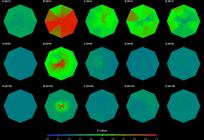Abstract: Expanding populations may loss genetic diversity because sequential founder events throughout a wave of demographic expansion may cause “allele surfing”, as the alleles of founder individuals may propagate rapidly through space. The spatial components of allele surfing have been studied by geneticists, but have never been investigate on dynamic and shifting habitats. Here we used an individual-based-model (IBM) to study how interactions between different habitat restoration scenarios and biological characteristics (dispersal capacity) affect the spatial patterns of the genetic structure of a population during demographic expansion. We found that both habitat dynamics and dispersal capacity, as well as their interaction, were the drivers of emergent pattern of genetic diversity and allele surfing. Specifically, allele surfing is more common when a species with low dispersal capacity colonizes a large geographic area with slow restoration (low carrying capacity). Despite this, we showed that allele surfing can be reduced, or even avoided, by dispersal management through suitable habitat restoration. Thus, investigating how colonization generates a spatial variation in genetic diversity, and which parameters control the emergent genetic pattern, are essential steps to planning assisted gene flow, which is fundamental for an effective planning of habitat restoration.
Key words
allele surfing; dispersal; habitat suitability; individual-based-model; simulation

 Thumbnail
Thumbnail
 Thumbnail
Thumbnail
 Thumbnail
Thumbnail


